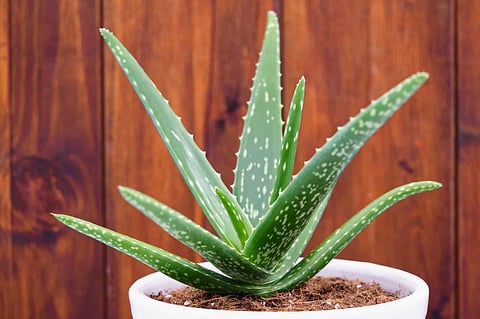
- Home
- Live Blog
- Breaking News
- Top Headlines
- Cities
- NE News
- Sentinel Media
- Sports
- Education
- Jobs

Mowsam Hazarika
(mowsam2000@yahoo.co.in)
Succulents, often admired for their ornamental beauty, are gaining attention for their edible and nutritional value. Known for their water-retentive properties, these hardy plants thrive in diverse climatic conditions, including the humid subtropics of Assam. Their adaptability, coupled with a growing interest in sustainable and healthy food sources, makes edible succulents a promising option for cultivation and consumption in the region.
What Are Edible Succulents?
Edible succulents are plants that store water in their leaves, stems, or roots and are safe for human consumption. Some of the most popular edible succulents include aloe vera, prickly pear cactus (Opuntia), purslane (Portulaca oleracea), and sedum species. These plants are rich in vitamins, minerals, and antioxidants and are often celebrated for their medicinal properties.
Why Edible Succulents Suit Assam
1. Climatic Compatibility: Assam’s tropical monsoon climate, with abundant rainfall and high humidity, supports the growth of many succulent species, particularly aloe vera and purslane.
2. Minimal Resource Requirement: Succulents require minimal water and can thrive in less fertile soils, making them ideal for regions with variable agricultural conditions.
3. Nutritional Benefits: Packed with essential nutrients, edible succulents can address nutritional deficiencies in rural areas while adding variety to the Assamese diet.
4. Cultural Integration: The Assamese cuisine, known for its use of greens and herbs, can easily incorporate succulents into traditional dishes.
Prominent Edible Succulents for Assam
1. Purslane (Xoriyabor in Assamese)
• Description: Purslane grows as a common weed in Assam, often overlooked despite its high omega-3 fatty acid and antioxidant content.
• Uses: Its tender leaves can be used in salads, curries, and chutneys.
• Cultivation: Purslane thrives in Assam’s fertile soils and can be grown year-round.
2. Aloe Vera
• Description: Widely known for its medicinal properties, aloe vera is also a versatile edible plant.
• Uses: Its gel can be used in drinks, desserts, and herbal remedies. Aloe vera juice is particularly popular for its digestive benefits.
• Cultivation: Requires minimal care and can be grown in home gardens.
3. Prickly Pear Cactus (Opuntia)
• Description: This cactus species is rich in vitamins and antioxidants. Its pads and fruits are edible.
• Uses: The pads (nopales) can be cooked as vegetables, while the fruits can be consumed fresh or used in jams and beverages.
• Cultivation: Although not native to Assam, prickly pear can adapt to the region’s climate with proper care.
4. Sedum Species
• Description: Some sedum species, like stonecrop, are safe for consumption and rich in nutrients.
• Uses: Their leaves can be added to salads or cooked dishes for a tangy flavor.
• Cultivation: Easily grown in Assam’s gardens and landscapes.
Economic and Environmental Benefits
• Supplementary Income for Farmers: Growing edible succulents can provide farmers with an additional income source, as these plants are in demand for their culinary and medicinal uses.
• Sustainability: Succulents require less water and pesticides, contributing to environmentally friendly farming practices.
• Urban Gardening: Succulents are ideal for urban spaces, encouraging self-sustenance among city dwellers.
Incorporating Edible Succulents into Assamese Cuisine
Incorporating succulents into traditional dishes can create unique culinary experiences while preserving Assamese food culture. For example:
• Aloe vera gel can be blended into pitha or traditional herbal drinks.
• Purslane can replace leafy greens in xoriyah tenga (sour fish curry).
• Prickly pear fruit can be used to make innovative desserts or juices.
Challenges and the Way Forward
While edible succulents offer immense potential, challenges such as lack of awareness, limited availability of planting materials, and the need for proper culinary knowledge must be addressed. Agricultural extension programs and awareness campaigns can encourage their adoption in Assam.
Conclusion
Edible succulents represent a sustainable, nutritious, and culturally adaptable food source for Assam. By integrating these plants into local agricultural practices and cuisines, the state can not only diversify its diet but also promote environmentally conscious farming. With the right approach, edible succulents could become a valuable addition to Assam’s agricultural landscape and culinary heritage.